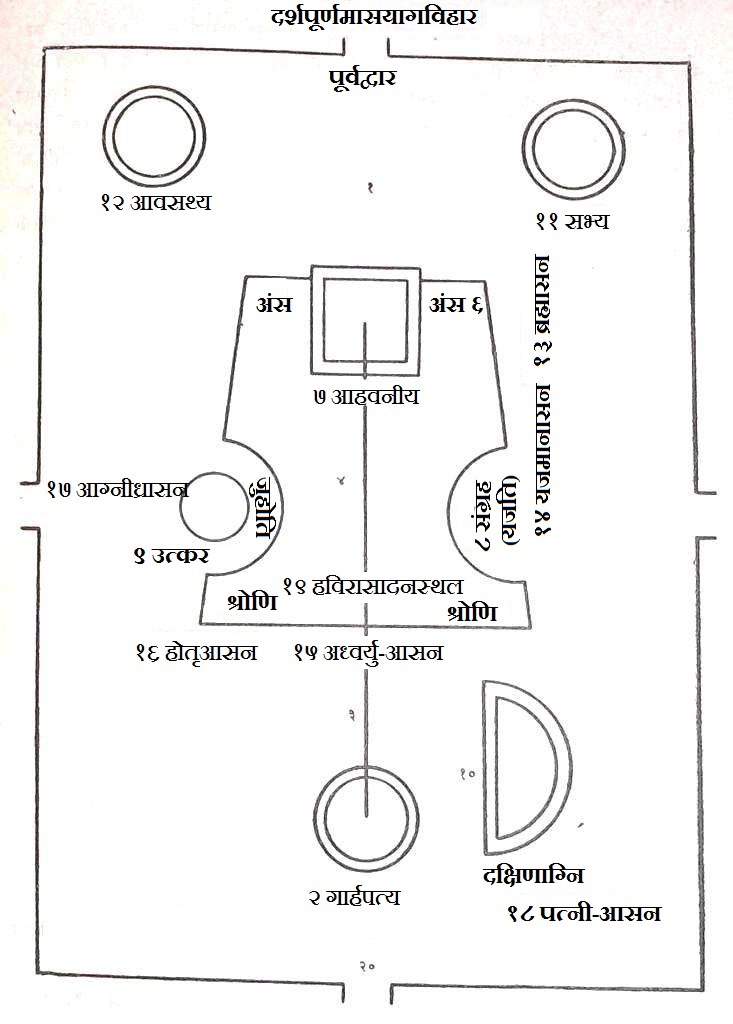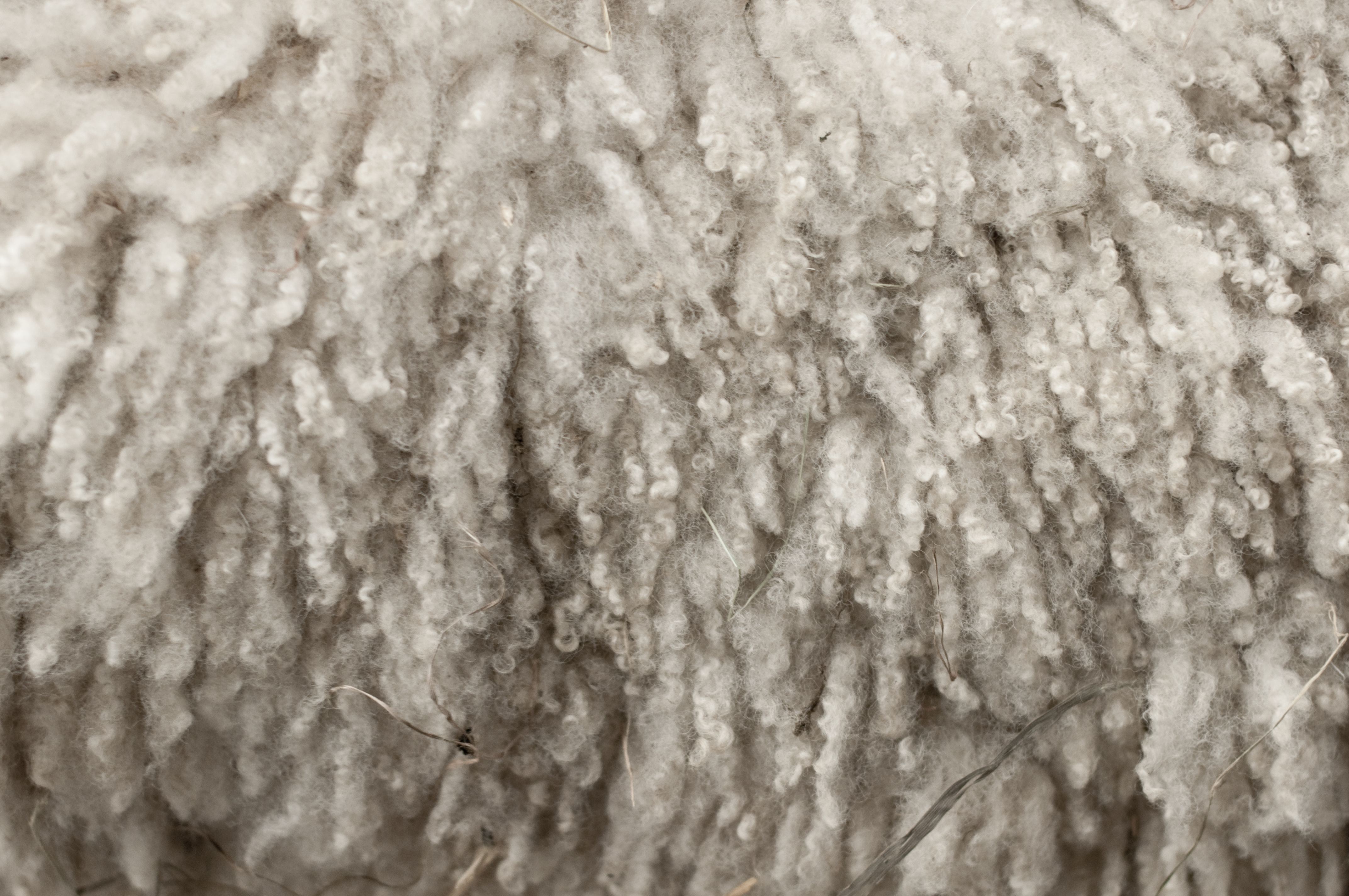|
Tarpaya
((Taipya Tarpya ) was an article of clothing used for sacrificial rituals in ancient India. It was a fine-quality cloth that was also used in sacrificial rituals and on other occasions. The names of various cloths such as "kshauma", "panduvanik", "varasi", "durshya", and "tarpya" exist in Vedic literature and may refer to either silk or linen. It is mentioned in the Atharvaveda which says "city people wear clothes made of tarpya." Shatapatha Brahmanas described various articles of sacrificial costume, in which Tarpaya is mentioned as a lower body garment. According to the Sathapatha Brahmanas, the sacrificial garment consisted of an upper body garment made of pure undyed wool, a lower garment of silk Silk is a natural protein fiber, some forms of which can be woven into textiles. The protein fiber of silk is composed mainly of fibroin and is produced by certain insect larvae to form cocoons. The best-known silk is obtained from the ... called "tarpaya," and a tu ... [...More Info...] [...Related Items...] OR: [Wikipedia] [Google] [Baidu] |
Vedas
upright=1.2, The Vedas are ancient Sanskrit texts of Hinduism. Above: A page from the '' Atharvaveda''. The Vedas (, , ) are a large body of religious texts originating in ancient India. Composed in Vedic Sanskrit, the texts constitute the oldest layer of Sanskrit literature and the oldest scriptures of Hinduism. There are four Vedas: the Rigveda, the Yajurveda, the Samaveda and the Atharvaveda. Each Veda has four subdivisions – the Samhitas ( mantras and benedictions), the Aranyakas (text on rituals, ceremonies, sacrifices and symbolic-sacrifices), the Brahmanas (commentaries on rituals, ceremonies and sacrifices), and the Upanishads (texts discussing meditation, philosophy and spiritual knowledge).Gavin Flood (1996), ''An Introduction to Hinduism'', Cambridge University Press, , pp. 35–39A Bhattacharya (2006), ''Hindu Dharma: Introduction to Scriptures and Theology'', , pp. 8–14; George M. Williams (2003), Handbook of Hindu Mythology, Oxford University Pres ... [...More Info...] [...Related Items...] OR: [Wikipedia] [Google] [Baidu] |
Silk
Silk is a natural protein fiber, some forms of which can be woven into textiles. The protein fiber of silk is composed mainly of fibroin and is produced by certain insect larvae to form cocoons. The best-known silk is obtained from the cocoons of the larvae of the mulberry silkworm '' Bombyx mori'' reared in captivity ( sericulture). The shimmering appearance of silk is due to the triangular prism-like structure of the silk fibre, which allows silk cloth to refract incoming light at different angles, thus producing different colors. Silk is produced by several insects; but, generally, only the silk of moth caterpillars has been used for textile manufacturing. There has been some research into other types of silk, which differ at the molecular level. Silk is mainly produced by the larvae of insects undergoing complete metamorphosis, but some insects, such as webspinners and raspy crickets, produce silk throughout their lives. Silk production also occurs in hymenopte ... [...More Info...] [...Related Items...] OR: [Wikipedia] [Google] [Baidu] |
Linen
Linen () is a textile made from the fibers of the flax plant. Linen is very strong, absorbent, and dries faster than cotton. Because of these properties, linen is comfortable to wear in hot weather and is valued for use in garments. It also has other distinctive characteristics, notably its tendency to wrinkle. Linen textiles appear to be some of the oldest in the world; their history goes back many thousands of years. Dyed flax fibers found in a cave in Southeastern Europe (present-day Georgia) suggest the use of woven linen fabrics from wild flax may date back over 30,000 years. Linen was used in ancient civilizations including Mesopotamia and ancient Egypt, and linen is mentioned in the Bible. In the 18th century and beyond, the linen industry was important in the economies of several countries in Europe as well as the American colonies. Textiles in a linen weave texture, even when made of cotton, hemp, or other non-flax fibers, are also loosely referred to as "linen". ... [...More Info...] [...Related Items...] OR: [Wikipedia] [Google] [Baidu] |
Atharvaveda
The Atharva Veda (, ' from ' and ''veda'', meaning "knowledge") is the "knowledge storehouse of ''atharvāṇas'', the procedures for everyday life".Laurie Patton (2004), Veda and Upanishad, in ''The Hindu World'' (Editors: Sushil Mittal and Gene Thursby), Routledge, , page 38 The text is the fourth Vedas, Veda, and is a late addition to the Vedic scriptures of Hinduism.Laurie Patton (1994), Authority, Anxiety, and Canon: ys in Vedic Interpretation, State University of New York Press, , page 57 The language of the Atharvaveda is different from Vedic Sanskrit, preserving pre-Vedic Indo-European archaisms. It is a collection of 730 Music of India#History, hymns with about 6,000 mantras, divided into 20 books.Maurice BloomfieldThe Atharvaveda Harvard University Press, pages 1-2 About a sixth of the Atharvaveda texts adapts verses from the Rigveda, and except for Books 15 and 16, the text is mainly in verse deploying a diversity of Vedic meters. Two different recensions of the text ... [...More Info...] [...Related Items...] OR: [Wikipedia] [Google] [Baidu] |
Shatapatha Brahmana
The Shatapatha Brahmana ( sa, शतपथब्राह्मणम् , Śatapatha Brāhmaṇam, meaning 'Brāhmaṇa of one hundred paths', abbreviated to 'SB') is a commentary on the Śukla (white) Yajurveda. It is attributed to the Vedic sage Yajnavalkya. Described as the most complete, systematic, and important of the Brahmanas (commentaries on the Vedas), it contains detailed explanations of Vedic sacrificial rituals, symbolism, and mythology. Particularly in its description of sacrificial rituals (including construction of complex fire-altars), the Shatapatha Brahmana (SB) provides scientific knowledge of geometry (e.g. calculations of pi and the root of the Pythagorean theorem) and observational astronomy (e.g. planetary distances and the assertion that the Earth is circular) from the Vedic period. The Shatapatha Brahmana is also considered to be significant in the development of Vaishnavism as the origin of several Puranic legends and avatars of the RigVedic ... [...More Info...] [...Related Items...] OR: [Wikipedia] [Google] [Baidu] |
Wool
Wool is the textile fibre obtained from sheep and other mammals, especially goats, rabbits, and camelids. The term may also refer to inorganic materials, such as mineral wool and glass wool, that have properties similar to animal wool. As an animal fibre, wool consists of protein together with a small percentage of lipids. This makes it chemically quite distinct from cotton and other plant fibres, which are mainly cellulose. Characteristics Wool is produced by follicles which are small cells located in the skin. These follicles are located in the upper layer of the skin called the epidermis and push down into the second skin layer called the dermis as the wool fibers grow. Follicles can be classed as either primary or secondary follicles. Primary follicles produce three types of fiber: kemp Kemp may refer to: Places * Kemp, Illinois * Kemp, Ohio * Kemp, Oklahoma * Kemp, Texas * Kemp Land and Kemp Coast, Antarctica * Kemp Town, a 19th-century estate in East Sussex, En ... [...More Info...] [...Related Items...] OR: [Wikipedia] [Google] [Baidu] |
Hindu Religious Clothing
Hindus (; ) are people who religiously adhere to Hinduism. Jeffery D. Long (2007), A Vision for Hinduism, IB Tauris, , pages 35–37 Historically, the term has also been used as a geographical, cultural, and later religious identifier for people living in the Indian subcontinent. The term ''"Hindu"'' traces back to Old Persian which derived these names from the Sanskrit name ''Sindhu'' (सिन्धु ), referring to the river Indus. The Greek cognates of the same terms are "''Indus''" (for the river) and "''India''" (for the land of the river). The term "''Hindu''" also implied a geographic, ethnic or cultural identifier for people living in the Indian subcontinent around or beyond the Sindhu (Indus) River. By the 16th century CE, the term began to refer to residents of the subcontinent who were not Turkic or Muslims. Hindoo is an archaic spelling variant, whose use today is considered derogatory. The historical development of Hindu self-identity within the loc ... [...More Info...] [...Related Items...] OR: [Wikipedia] [Google] [Baidu] |






.jpg)